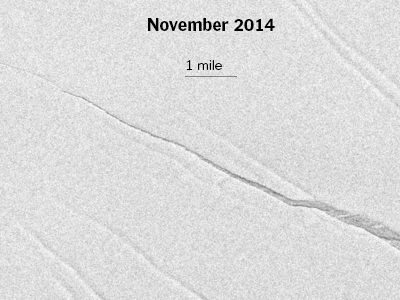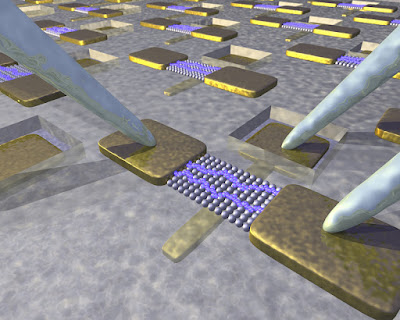 |
| Image Source: Aventurine |
All Posts (6505)
The day has come! It's been two years (real world time and book time) since we last heard about the superpowered teens, the Elementals, working to protect their world. Now, they are focused on stopping the Prudence kids from enacting their worst plan yet: bringing back A.G.
This book of diverse and intersectional superheroes is all about showing what happens when narratives get twisted, and how important it is to trust in yourself. The Elementals learn a lot about the world in this sequel, and that lesson takes you on an adventure you won't forget!
The book is available NOW on Amazon, Kindle, CreateSpace, and of course my website. Get your copy today and support the diverse superhero movement!
 |
| Image Source: NYT |
Topics: Climate Change, Environment, Geophysics, Weather
An Iceberg the Size of Delaware Just Broke Away From Antarctica, Jugal K. Patel and Justin Gillis, New York Times
 |
| NASA’s Solar Dynamics Observatory spacecraft captured this view of a sunspot rotating into view between July 5 and 11, 2017. (Source: NASA’s Goddard Space Flight Center/SDO/Joy Ng, producer) |
Incredible video shows northern lights shining above Michigan’s Mackinac Bridge during the early morning hours. https://t.co/sroBjEAofA pic.twitter.com/9efeFd5K34— ABC News (@ABC) July 18, 2017
 |
| Image Source: Business Insider |
Topics: Geophysics, Politics, Research, Science
 |
| Wikipedia: Doomsday |
The underlying physics of natural hazards, Physics World Multimedia
In honor of the release of my second novel, Return of A.G., next week, I'm running a sale of all the Legend of the Orange Scepter t-shirts and posters! Check out the website store and support the Elementals and the diverse superhero movement. There's something for everybody; just look at he stuff above!
 |
| Image Source: Cagle Comics |
Topics: Civics, Existentialism, Politics
*****
Sun Tzu, The Art of War
Related links:
1. Exxon Fined $2 Million for Violating Russia Sanctions While Tillerson Was CEO, Inae Oh, Mother Jones
2. Why the GOP and the Bernie Left Don’t Care About “the Russia Story”, Sasha Stone and Ryan Adams, Extra News Feed
3. Party of Apocalypse, Essay
 |
| The cosmos can be considered as a collider for human to access the results of particle physics experiments at ultimate high energies. Credit: Department of Physics, HKUST |
Topics: Electrical Engineering, Nanotechnology, Semiconductor Technology
Colloidal metal nanoparticles make Coulomb transistor, Belle Dumé, Nanotech Web
The Priestess: Stones, Conflict and Legacy concludes as the Princess Meru waits as final preparations to defend Sea City from an impending Tenaree attack. She won't 'wait' long for within the hour, Meru will be introduced to her betrothed, Prince Tinochika of the Island Nation! However, as hour grows short Meru is conflicted as to what her future entails. Against her better judgement, Meru summons the foreign Amoosu, Mjarga the Witch of Aesirfjord to divine her future. With war and marriage imminent, the Princess must know if there is hope for her love of the Valley Knight to bear fruit! It is a dangerous question and having seen the Amoosu's power, Meru may well not like what she sees if Mjarga is willing to help her at all! These questions as with others will be revealed in the conclusion of 'The Priestess: Stones, Conflict and Legacy' Part 6!
The Second Saga continues as the Aesir traitor Turid is confronted by Chief Svengald! Can the Chief reach his former subject through the brutal conditioning Turid endured at the hands of the Red Spirit? What can even he learn from a fanatic? Will his new 'sight' granted by the mighty sea serpent 'Sir Fish' be successfully brought to bear against the power of a goddess? Meanwhile, the Valley Knight must bring newly arrived Prince Tinochika up to speed concerning plans to defend Sea City from the Tenaree one day away! He must do this and stand aside for the Prince to take Princess Meru as bride. Can he do such a thing after professing love for her? Even so, how will this affect the Priestess? All will be revealed in, 'The Priestess: Stones, Conflict and Legacy' Part 5!
 |
| Image Source: Giphy.com |
Topics: Existentialism, Humor, Politics
Other than...
1. How Much More Absurdity Can You Handle? Charles P. Pierce, Esquire Magazine
2. Trump Lawyer Marc Kasowitz Threatens Stranger in Emails: ‘Watch Your Back , B---h’, Justin Elliott, ProPublica
I want AFROcreators to produce more stories, movies, comics, art, and music about the "Great War of Africa."
The BSFS is a good place for AFROFuturistic writers to gain inspiration. Here, we can share, critique and support as well as promote each other's works. Let's put out more ideas for education, entertainment, and enlightenment. Let's consider the Great War of Africa as a shared theme.
The modern cinema is crammed with European War stories: Wonder Woman, Captain America, Nick Fury and on and on. But the Great War of Africa is mostly absent. Hollywood spent millions on the movie "Dunkirk, " but some of the greatest WWII battles were fought in Northern Africa.
The Great War of Africa began in the late 1800s when Europeans sought to steal the treasures of the Mother Land. There were many heroes, villains, and survivors worthy of prominence in our speculative arts. Real superheroes. We have much more than Black Panther.
These stories have to be told.
Who writes and produces those works? We should. We must. We will do this. And, many of us are acting on it now.
The Red Spirit broods deep within an extinct volcano as she licks her wounds after being thwarted by a new enemy. An enemy which has proven resourceful and capable of wounding even her, a semi-divine being! Brooding will not be enough to make her plans to conquer the Nation of Palm and all the surrounding kingdoms. It will take clear focus to stick with her plans though the prospect of an individual mortal or god capable of killing her is a sobering development.
A surprise visit by an uninvited guest, has the potential to bring everything back into focus for the Red Spirit and potentially give her greater means to accomplish her 'ultimate goal'. Or will her guest bring ill tidings for the coming attack on Sea City? All will be revealed in, 'The Priestess: Stones, Conflict and Legacy' Part 3!
An interesting article about 'The Queen of Dark' a famous South Sudanese model living in Minnesota. You can read about it here. http://tinyurl.com/yb7on2ws
When I wrote Super Humanity, I included some jokes about the characters' blackness and American society's almost 'rejection' of those with very dark skin from the entertainment industry. It's become a running joke in some ways. You've heard them all before- too black for music videos, for one.
If my books get made in movies, I'd like her in to be in it. Probably not as a star, since my main characters are much younger.
Palm's Champion N'Sisi's unsanctioned reconnaisance mission bears bitter fruit as she reveals what the Tennaree have been up to on their march towards Sea City! It will fall upon the Valley Knight to keep Palm's remaining high command from panicking in the face of such grim news. With the power of Little Fish, the Witch Mjarga and his comrade-in-arms Chief Svengald, the Valley Knight may well have the means to keep things together! Meanwhile, an unsettling development occurs that casts a shadow that should not be present. Will the Valley Knight and his allies catch it in time? All will be revealed in 'The Priestess: Stones, Conflict and Legacy', Part 2!
The Priestess returns today and you are privy to a meeting of the Nobles of Palm as they commend the Valley Knight and his new allies the Aesir for the daring action against the Tenaree and the Red Spirit! Ghilda, Chief's Vife of Svengald takes in the spectacle and assesses her husband's place in this strange new land with stranger people. Clothing, food and customs are vastly different from what she knew in Aesirfjord, but the potential for reward in the coming attack on Sea City has the Chief's Vife's eye on things bigger than simply returning home. While plans are being made, Little Fish and the Aesir Witch Mjarga have an unexpected and important visitor. One who asks questions which prove difficult for both to answer...but they must if he is to reveal that which they need to know about the coming attack. All will find the 'battle' on the homefront can be precarious as on the frontlines in 'The Priestess: Stones, Conflict and Legacy' Part 1!
So for a while now, I've been trying work on a prose novel. Slowly becoming disillusioned with the comic books industry, I figure it's a good time to continue the journey that I began in 08'. But I can't because honestly...I'm scared. Not of one thing in particular, but a number. Novel's seem extremely daunting, the sheer size and scope are frightening to me. I really don't even understand how people write novels? What drives you? What keeps you driven? What pushes all the fear and anxiety out of your heads? And do you have some of, whatever it is, I can borrow? Also what if my novel sucks? What if it's just not a good story? I'm writing this as a sort of confession and maybe a little therapy. I've been told to outline or to take it one chapter at a time. But ever time I sit down to write I feel like I'm facing a wall of water that is about to annihilate me. Anyone have any recommendations about how to get over that?

